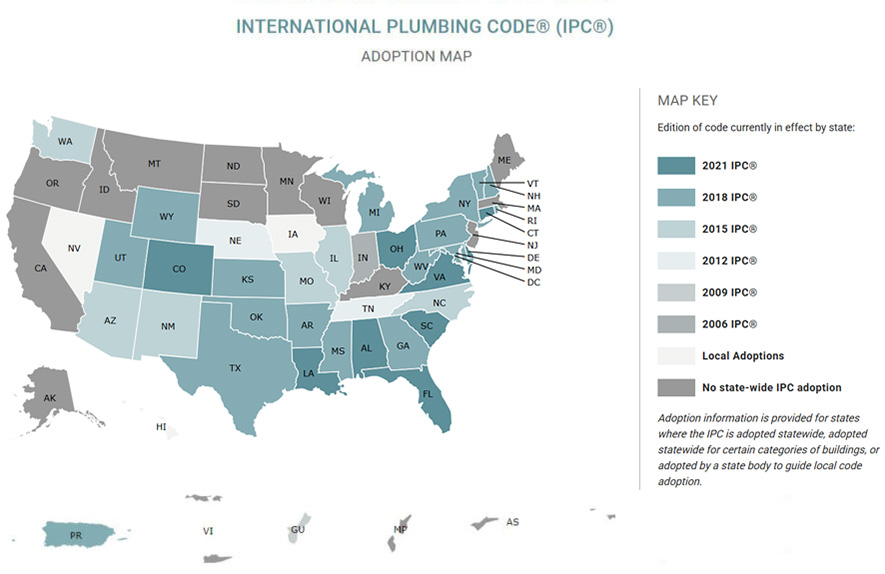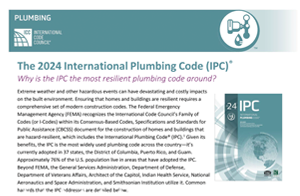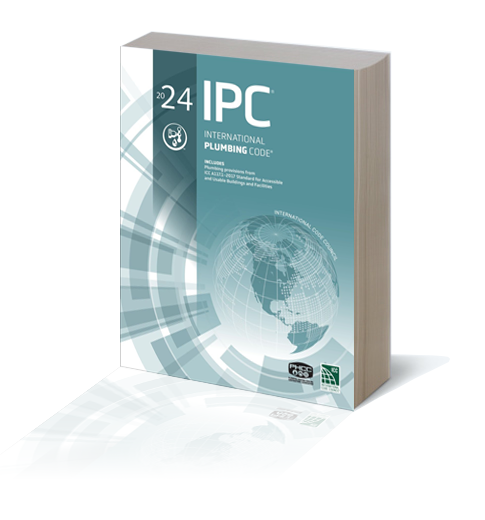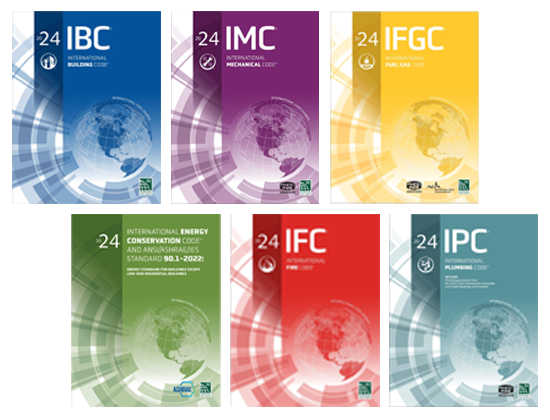
The IPC is the most widely adopted plumbing code across the United States. The IPC is currently adopted in 37 states across the U.S. and is also adopted in Puerto Rico and Guam. Approximately 257 million people, or 76% of the US population, live in areas that have adopted the IPC.
The IPC is also used in Saudi Arabia, the United Arab Emirates, Columbia, Mexico, and other countries around the world.
Why is the IPC the most resilient plumbing code around?
The I-Codes, when adopted as a family of codes, correlating as they do, provide a consistent system of regulations that designers, builders, and regulators can rely on,
across city, county, or state lines.
It is for this reason that FEMA’s “Consensus-based Codes, Specifications and Standards for Public Assistance Policy” requires that as a condition of grant funding, the I-Codes be incorporated into the design and construction for repair and replacement of disaster-damaged facilities. FEMA requires construction not only meet the latest editions of the IBC, IMC, IFGC, IECC, and IFC, but also the IPC.
The adoption of building codes, including the plumbing code, is not just about the codes. Technical support, in the form of expert advice, code opinions, and technical resources are some of the most sought-after services following adoption of a code.
The Code Council’s expert technical staff provides advice, code opinions, and resources to our more than 60,000 members as a complimentary benefit.
We have several resources, including commentaries and study companions, to support our members and industry professionals in achieving a better understanding of the code and implementing inspection programs.
Numerous training resources are available on the IPC including face to face training and webinars which are led by qualified instructors and plumbing industry leaders.
The Code Council also has a world class digital platform where codes, industry standards and resources can be accessed from one’s computer, tablet, or phone.
The IPC is developed through a governmental consensus process that involves many interest groups including public safety officials, plumbing contractors, manufacturers, standards development organizations, academia, consumers and many more.
IPC development is conducted every three years.









